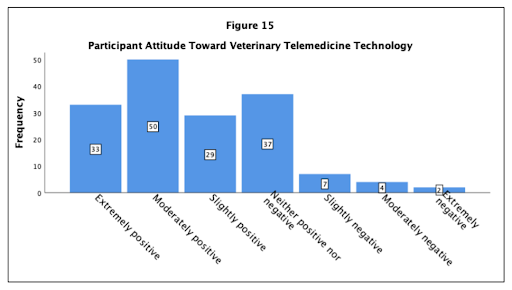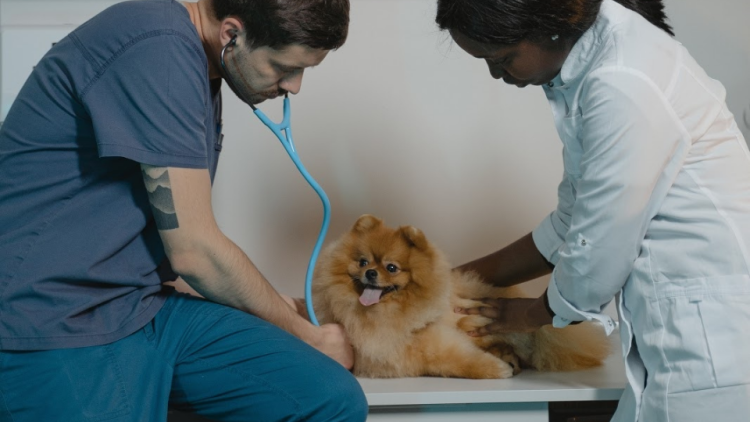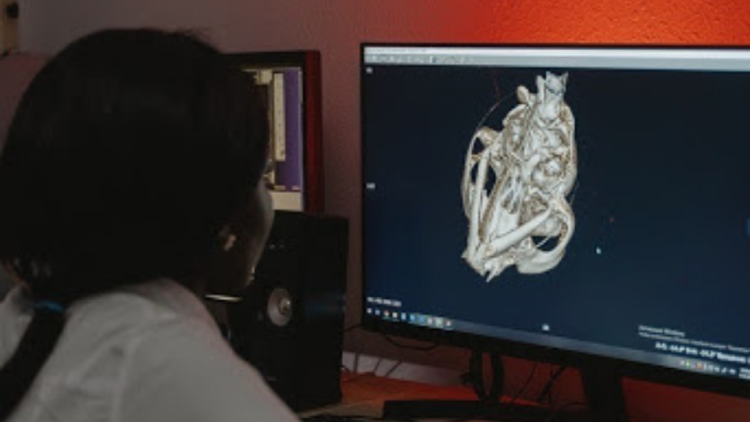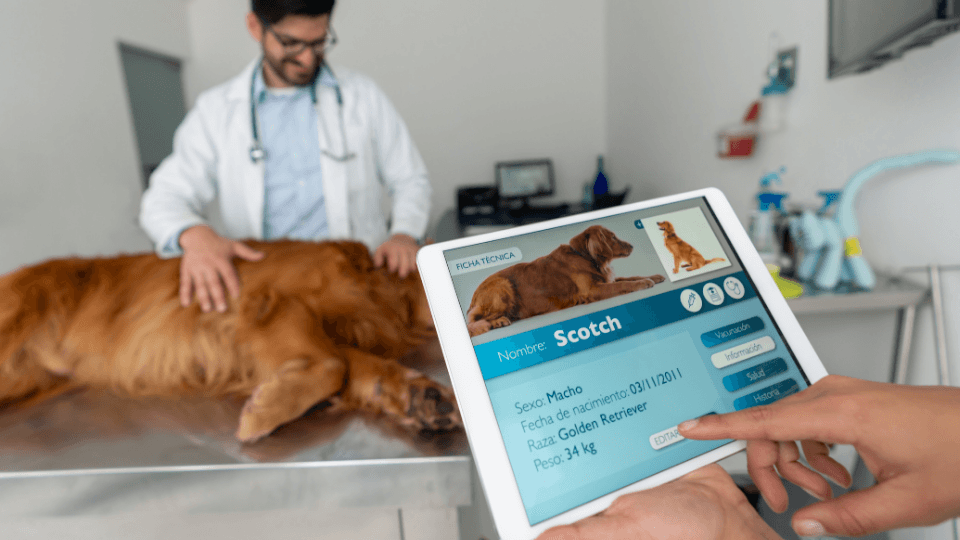In the recent past, veterinary medicine has been completely revolutionized by huge disruptions within the technological space. These advancements have enabled practitioners to make faster diagnoses, refined prognoses and save more animal lives, in many cases even before a disease exhibits first signs.
Not only has technology streamlined operations and helped practitioners realize their potential, but it has also helped them monitor their patients like never before while communicating with pet owners more effectively.
If you’re interested in modernizing your practice, here are some of the most practical and progressive technological advancements that veterinary teams can adopt to optimize their workflows.
1) Telemedicine
This ‘digital first’ way of thinking has rapidly extended into all parts of our being. As our healthcare services slowly increase their digital capabilities, virtual services – referred to as ‘veterinary telemedicine’ when used for our four-legged friends – are following suit.
In 2018, the University of Tennessee conducted a study to investigate consumer and veterinarian perception and utilization intention of Veterinary Telemedicine. One of the survey’s findings is highlighted in the picture shared below:
 Source: The University of Tennessee
Source: The University of Tennessee
Telemedicine encompasses all the virtual tools and modes of communication, right from the use of photo messaging, text messaging, video calls and emails, to the use of apps and wearable devices.
While pet owners are insisting that they be provided with a digital experience that aligns with their lifestyles, this tech solution can have notable benefits for veterinarians alike. Some of these include:
- Building Strong Client Relationships
A telemedicine service, delivered through a website, email or even text messages, can aid veterinarians in providing owners with dependable expert advice, while also increasing engagement with them and building better client relationships.
- Providing Better Post-Surgical Care
When an animal undergoes any kind of operation, post-surgical care is extremely important for a speedy recovery. The veterinarian chosen by the pet owner can monitor this critical stage through something as convenient and easily accessible as their smartphone.
For instance, the said veterinarian can keep a tab on the patient’s recovery by asking the owner to send images of the incision site to monitor how it is healing and pick up on any abnormalities early on. The course of treatment can then be altered accordingly.
- Functioning with Increased Convenience and Flexibility
For many vets, asking owners to get their pets into the clinic is a challenge by itself; it may be that the pet doesn’t mix well in the waiting room, doesn’t enjoy the experience, is a senior animal, or terminally ill. Telemedicine offers veterinary practitioners a way to ease these issues. They can conveniently leverage video calling to conduct virtual appointments from the comfort of their own homes. It's a win-win for both parties.

Apart from the ones mentioned above, there are many other ways in which telemedicine adoption can prove to be advantageous for veterinarians. Veterinarians can contact their state veterinary board to learn how they can incorporate telemedicine into their practice. Embracing this progressive tech solution will not only make your life easier, it will also have positive effects on your business’s bottom line in the long run.
2) Artificial Intelligence
Artificial Intelligence, commonly referred to as ‘AI’, is one technology that is making exceptional strides in almost every notable industry at present. This state-of-the-art tech solution is evolving quickly and has much to offer in veterinary medicine.
AI has a lot in store for individual practitioners as well. Some of the ways veterinarians can leverage AI to streamline their workflows and improve patient outcomes include:
-
Deep learning is one AI-powered technology that makes use of neural networks, sometimes referred to as bioinformatics. When applied to diagnostic imaging, this solution works by examining a bank of images to “learn” parts of the anatomy and discern what falls under the “normal” category. Once the software can identify what normal is, it can pinpoint areas of suspected abnormality that need to be investigated further by the vet. This provides an added advantage and accelerates care delivery.
-
AI-enabled software can automate many of a veterinarian’s paperwork-related tasks that usually slow down an appointment. These software solutions do everything right from automatically and correctly rotating, labeling, precisely measuring, and analyzing documents, freeing up time for the practitioner to spend with pet owners and create personalized treatment plans.
-
Radiography is another area where AI is used with great success. Complex algorithms prove to be highly accurate in recognizing patterns in imaging data. With AI-driven radiology systems, results that have accuracy rates on par with that of a live veterinary radiologist can be furnished within as little as five minutes’ time. This further accelerates the speed with which treatments can be assigned to ailing animals.
Artificial Intelligence truly holds the potential to revolutionize veterinary medicine, provided that it is used correctly. It is quickly set to become one of the most disruptive healthcare innovations of our times. Therefore, forward-thinking veterinarians should seriously consider integrating this tech solution into their practice.

3) Data Management Solutions
More often than not, one of the greatest sources of stress for veterinarians is the need to maintain paperwork alongside the already exhaustive list of duties they are required to perform regularly.
More time spent doing clerical documentation work implies less time spent with patients. This is clearly unfavorable for the patients, but it also puts a strain on disillusioned veterinary practitioners who spent years studying with the hope of working closely with animals.
So then, where exactly does the solution lie?
Effective data management is the key to rid veterinarians of this problem. Some of the ways this can be done include:
- Making use of data management software to keep records and other vital patient information consistent, concise and easily accessible,
- Leveraging cloud hosting to store patient data to boost its interoperability across the organization or even a joint veterinary platform. This will help track outbreaks or herd infections quickly and, in turn, ameliorate outcomes,
- Clinical Decision Support Systems (CDSS) can help make sense of healthcare data with the latest evidence, as well as suggest treatments tailored to each patient and furnish personalized care plans,
- Machine learning (ML), a subset of AI, can be applied to complex data in order to predict patterns that the human eye could have missed, and conclude health outcomes in general. These predictions can be used to describe patterns and trends on a macro-level for the authorities and the general public, or targeted to help a specific patient group.
Health data is growing highly multidimensional and complex with each passing day. Therefore, data management is now more necessary for veterinary practitioners trying to streamline workflows and enhance patient outcomes.
Closing Words
The solutions mentioned above only scratch the surface of the endless possibilities that can be furnished for your practice when integrating technology. From telemedicine and pet insurance comparison tools, to artificial intelligence-powered diagnostics and automated client retention campaigns.
As someone who is trying to grow their practice, you need to have a basic understanding of what your industry counterparts are doing, and understand what the market has to offer. Don't be afraid of embracing change.
